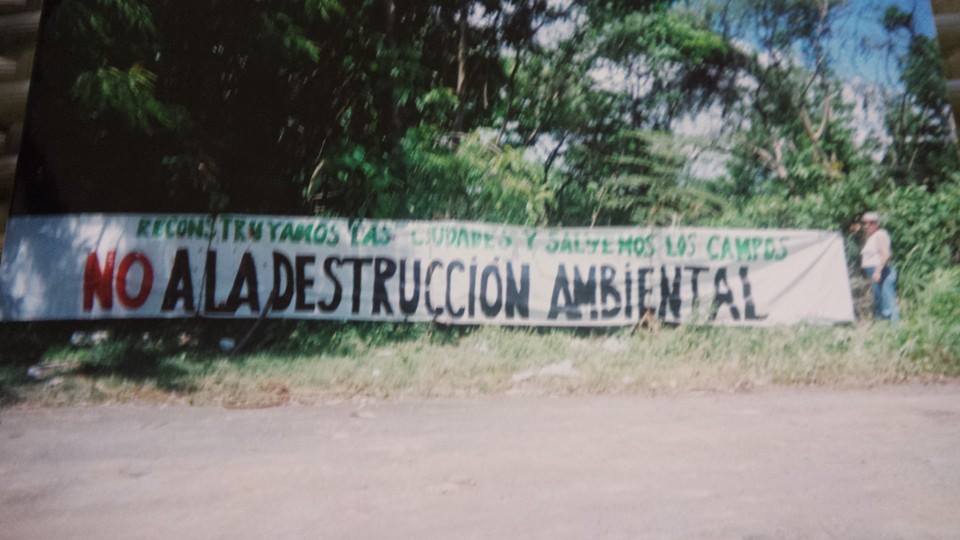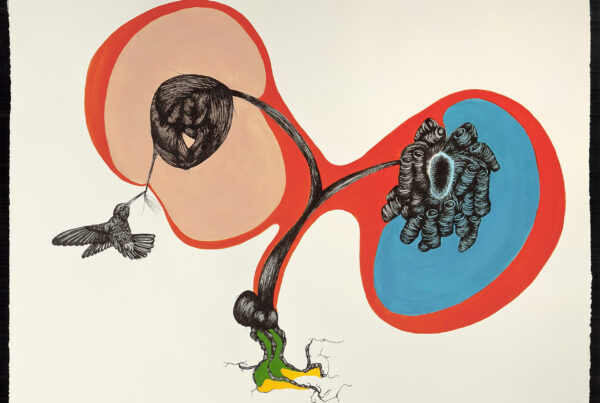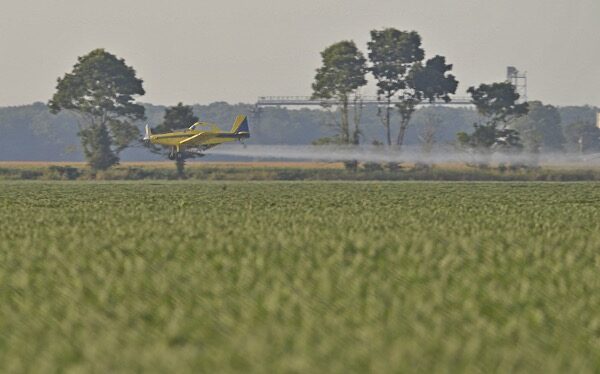The story of how a small group of neighbors in the suburbs of San Juan, Puerto Rico, came together to beautify their neighbourhood and restore a small remnant of forest by planting trees; and how in the process of their struggle, they become ‘politicized’ and integrated into a larger movement challenging the political economy of urban growth.
Urban areas have increasingly become sites of social-ecological struggles as communities seek to defend and re-make their neighbourhoods and challenge processes of community displacement and social and environmental degradation. This is the story of the Cupey Arboretum, a small group of middle-class suburbanites who (sometimes) came together with a simple idea –to beautify their neighbourhood and restore a small remnant of forest by planting trees; and of how in the process of their struggle, they become ‘politicized’ and integrated into a larger movement challenging the political economy of urban planning. The analysis emphasizes the importance of individual actions, even if small, and of explicitly ‘connecting the dots’ between local processes and the supra-local political economy driving urban transformations. It also invites refection on the role of lived experiences as a basis for engagement.

Urban expansion in San Juan de Puerto Rico. Source: www.skycrapercity.com
The political economy of the urban growth machine
Puerto Rico, a small archipelago in the Caribbean, is a colony of the United States since 1898. Until the 1940s, its economy was mostly agricultural. A large ‘development’ project called Operation Bootstrap implemented by the local government with strong backing from the US, gradually transformed the country’s economy into an industrial and urban one. US colonialism also meant the implementation of the US model of urbanization, known as (sub)urban sprawl: low-density, car-dependent urbanization spread away from city centres.
Today, most of Puerto Rico’s population lives in low-density gated suburban communities –abandoning both rural (agricultural) areas and urban centres; almost everyone (about 90%) uses private cars as their main transportation; and we have one of the densest networks of roads in the world. A clear ecological consequence of this has been the enclosure and destruction of large swaths of green and blue spaces (forests, mangroves, agricultural lands, water bodies, etc.) in and around the expanding city. Developers cut mountains, paved over creeks and prime agricultural lands labelled as ‘idle’ or ‘wasted spaces’. Local activists have a word for this type of projects: desastrollo, a play with the Spanish word for development (desarrollo), and which we could roughly translate as disasterment.
The typical apolitical explanations of urbanization state that it is spontaneous and inevitable; the state (through its planning system) and market (through the construction sector) simply respond to consumer demand for housing through a rational, ‘expertbased’ decision-making process. Political ecology questions this perspective because it ignores the deliberate, power-laden political choices that make urbanization possible, as well as the resistances that challenge it and underscore its unequal and undemocratic nature. It shows that there is a structural process of what Harvey Molotch called in 1976 a “growth machine” in the city.
Sprawl would not survive without what political ecologists’ call facilitation. In Puerto Rico, sprawl has been facilitated by the drastic expansion of the road network, entirely built and maintained by the government, the significant financial and regulatory benefits to the construction industry, the approval of most construction projects through exceptions to planning rules, and the soft hand and complicity in environmental violations. This is strengthened by corrupt and revolving door relations between the political and construction elites and severely undemocratic decision-making processes in a context of an “emergency” regime which limits public participation and criminalizes protest. Finally, suburban sprawl is also supported by an ideology which has historically linked construction to progress and development which makes any proposal for urbanization appear inherently good and almost inevitable.
Guerrilla gardening against sprawl in the Cupey Arboretum
The neighbourhood of Cupey was one of the first suburban expansions of the city of San Juan to the rural/agricultural lands south of the city, in the 1960s. In the 1980s, the neighbourhood was a growing but still quasi-rural, located in the frontier of forested hills. Today, it is San Juan’s third most populated neighbourhood. In 1992, the main road to Cupey was expanded, cutting through forested hills and facilitating further suburban growth of the neighbourhood. A group of neighbours had unsuccessfully tried to block the project and to achieve conservation of the area’s remaining forest.

Tentative limits of the Cupey Arboretum, proposed in 2005 but as of today still unapproved. Source: Puerto Rico Department of Natural and Environmental Resources
In the mid-1990s, Don Esteban González, a retired resident of the neighbourhood, had an idea: a reforestation project to beautify and restore the area impacted by the road, which the government had left completely devoid of vegetation, and to serve as a green buffer for the creeks that flowed next to the road and connected downstream with the city’s only river, the Piedras River. Don Esteban’s idea was both ecological and aesthetic: he was especially keen on yellow flower trees, for being a bright and highly visible colour, and perhaps also because it is a colour associated with joy. The name Arboretum, which in a narrow sense means a collection of trees but is used as reference of urban and botanical gardens, came from a previous movement which in the early 1980s had promoted the creation of an Arboretum for San Juan.
Esteban started recruiting some neighbours for his idea, including his doctor, Basilio. Basilio suggested to a local school’s Boy Scouts troop, and held several meetings to organize a first reforestation event. The activity was held in 1999 with the troop, with the collaboration of the state and local government and a national environmental organization. Over the next few years they would organize other large reforestation events in collaboration with government agencies and non-government organizations, until they completely reforested most of the area’s green spaces. By 2014 the Arboretum had planted more than 3,000 tress, all in an area less than 5 kilometres long. Indeed, this is not a ‘photo-op’ with a pre-planted tree, frequently used by politicians and corporate executives to greenwash themselves in highly publicized events such as Earth Day.
Esteban preferred action to meetings and planning, and he was adamantly independent: he was a ‘man on a mission’. He created a makeshift tree nursery in his front yard and in a small patch of the Arboretum. He would collect tree saplings from different parts of the city and would obtain some from the government’s greenhouse staff, with whom he developed a close relationship. Locally raising the trees made them more adapted to local conditions, hence more resilient over their lifetime, but also gave the Arboretum independence from the government for its reforestation initiative; in fact on occasions the Arboretum supplied saplings of various species to the government’s nurseries.
In the afternoons, Esteban would plant trees in any open greenspaces he could fnd. Sometimes he did this with the collaboration of other small groups of nearby residents, university students and schoolchildren, but most of the times by himself or with one or two friends. Over the weekends, they would take care of the area –for instance, by removing trash and weeds from recently planted trees. These self-organized activities to recover abandoned urban spaces and turn them into urban commons are sometimes called “guerrilla gardening”.

Don Esteban (left with hat) with other Arboretum collaborators in one of the first tree-planting activities, circa 2000. Source: Basilio Santiago.
Reconnecting ecology and people
For the Arboretum, in the words of Basilio, the objective was to “create a harmony between nature and the communities”. Through the reforestations and interpretive guided walks through the Arboretum, as well as its promotion of local school projects in the forest, the Arboretum fostered emotional/spiritual connections with ecology. The importance of these encounters of suburbanites (especially kids) –increasingly isolated inside private homes with TVs, smartphones and video-games– when they come out, play and discover in a forest, plant a tree and connect their hands to the soil, touch leaves of different shapes and textures, or encounter for the first time a bird or the creek and their sounds, should not be underestimated. Perhaps what Esteban was talking about, was that the “only road to freedom is through beauty” (Friedrich Schiller in The Aesthetic Education of Man) reminding us that our freedom, when practiced, blossoms us like the yellow flowers he was planting.
Through these activities, the Arboretum also broke the ecological-geographical illiteracy of many of the suburb’s residents, who did not have the local ecological knowledge or the connection to the territory that comes with sustained long-term interactions with our surrounding. They learned that inside the forest lied a great deal of life. Moreover, the Arboretum linked the forest’s permanence to our well-being – for instance, to the protection from the noise and pollution from the area’s traffic, and from the flooding suffered by sectors of the neighbourhood.

Don Esteban in a part of the Arboretum near his house, showing the sign that the maintenance of the road had been adopted by the community, circa 2005. Source: Basilio Santiago.
Challenging growth, recovering commons and democracy
Contrary to the common perception as a suburban ‘leisure’ activity and as material for television programs, gardening is historically tightly interwoven with struggles over land use planning and greenspace, as explained by George McKay in his book Radical Gardening (2011). Ecology becomes political in these struggles; moreover it becomes a collective concern. The Arboretum’s apparently apolitical and aesthetic ‘reforestation’ actions were actually the contrary. As they connected people to each other and to the local ecology, they politicized nature as an autonomous sphere of experience outside profit or state mandates, transforming the vision of the value of an urban forest and of whose domain of action it is: from an exclusively ‘public’ (i.e. government) and ‘private’ (i.e. market) space into a commons, a collective endeavour by and for the communities. In doing so, it was challenging the privatizationof the public sphere of the contemporary city.
The Arboretum also politicized as it inevitably clashed with the political economyof the suburban sprawl machine. Protecting the last stretches of greenspace in Cupey confronted the construction sector’s plans and the Arboretum’s leaders realized that the problem was much broader than the local. As Basilio Santiago explained in an article he wrote for Ecoportal.net, the Arboretum ‘emerges from the neighbouring communities’ reaction to the accelerated deforestation and the insatiable, poorly planned urbanism that the region suffers, as in all of Puerto Rico.’ The greenspace became, as McKay suggests, a “special zone for the common articulation of social change…the critical rejection of some aspects of society, and…the confrontation with authority.”

Campaign for the protection of the Arboretum. The sign reads: Let’s reconstruct the cities and save the countryside. No to environmental destruction. Source: Basilio Santiago.
This recognition of the scale of the problem fostered a connection with a larger network of neighbourhood associations and community environmental groups which had been struggling since the 1990s to protect its dwindling greenspace and interconnected water bodies of San Juan from urban sprawl machine and the related enclosures taking place in San Juan. It had slowly coalesced into an alliance promoting the creation of the “San Juan Ecological Corridor” (SJEC) in the main contiguous forest of San Juan, through which the Piedras River flowed. In 2003 the SJEC became legally protected. This network in turn led the Arboretum activists’ to emphasize the broader ecological flows of forests and water which connected their local greenspace to the SJEC. In 2004, with the support of the SJEC movement and other civil society organizations, the Arboretum became legally protected.
The victory, however, was short-lived, and showed the limits of legal strategies. Even after the legal protection and recognition of the local ‘civic’ ecological responsibility, the government continued to approve construction projects in the area. The ‘expert’ planning process and the ‘participation’ of public hearings proved once again a farce. The group’s fight, therefore, became increasingly one about democracy, denouncing the government’s cronyist relations with developers and the farce of the planning process. In numerous letters, Esteban called out the ‘leonine’ contracts that gave away greenspace for more shopping centres and housing, and pointed to the government as the biggest predator of ecology and community. The group became increasingly involved in draining court battles that demobilized the collective.
In recent years some of the Arboretum activists sought to revive the networks of collaboration to break this impasse and integrate into the broader ecological landscape of the Piedras River watershed. In 2009, they organized the first ever Piedras River cleanup and reforestation day. The activity, which has been repeated every year since, mobilized hundreds of volunteers from the community’s schools and neighbours, as well as from various civil society organizations, giving visibility to the Arboretum as part of the efforts by other larger and powerful organizations to protect the Piedras River watershed and the associated San Juan Bay Estuary. In other words, broadening the ecological scope was a way for increasing the community’s power.

Collaborators of the first Piedras River Cleanup and Reforestation activity in 2009. Source: Basilio Santiago
Naming the agents of destruction
To plant trees was to metaphorically cultivate democratic change… breathe new life into the dead metaphor of grassroots democracy… At the heart of this symbolic nexus was a contest over definitions of growth: each tree planted by the Green Belt Movement stood as a tangible, biological image of steady, sustainable growth, a dramatic counter-image to the ruling elite’s kleptocratic image of growth, a euphemism for their high-speed piratical plunder of the nation’s coffers and fnite natural resources…[it] inverted the syntax of violence by naming the agents of destruction. (Rob Nixon, Slow violence and the environmentalism of the poor, pp. 135-36)
The conflicts around loss of greenspace as a result of urban expansion has become increasingly common across Puerto Rico. In many instances these are localized fghts against particular construction projects. Some have criticized these movements as NIMBYists (“not in my backyard”). However, the experience of the Arboretum, as many others around the world, demonstrates that through their everyday engagements, people can open to broader understandings of core issues relating the environment with politics and the economy through a grounded experience in the local, but which at the same time surpasses a localist understanding. Political ecology contributes to this task by connecting issues of democracy, economy, and ecology. In doing so, it makes visible the need for broader alliances with other struggles.
*This post is part of a series sharing chapters from the edited volume Political Ecology for Civil Society. Gustavo García López’s contribution is included in the chapter on social movements. We are eager to receive comments from readers and especially from activists and civil actors themselves, on how this work could be improved, both in terms of useful content, richness of examples, format, presentation and overall accessibility.





great initiative!
Remodelling and reinventing urban sprawl is what we need to do. Decreasing our footprint may depend on planting vegetation on our roofs and on abandoned strusture lands. Overall a complex proposition regarding the needed control of urban fauna, syray cats and dogs and other unwanted biota.
An alternative that will rescue other resources is to favor restoration of our water resources, creeks and rivers. A win win situation.